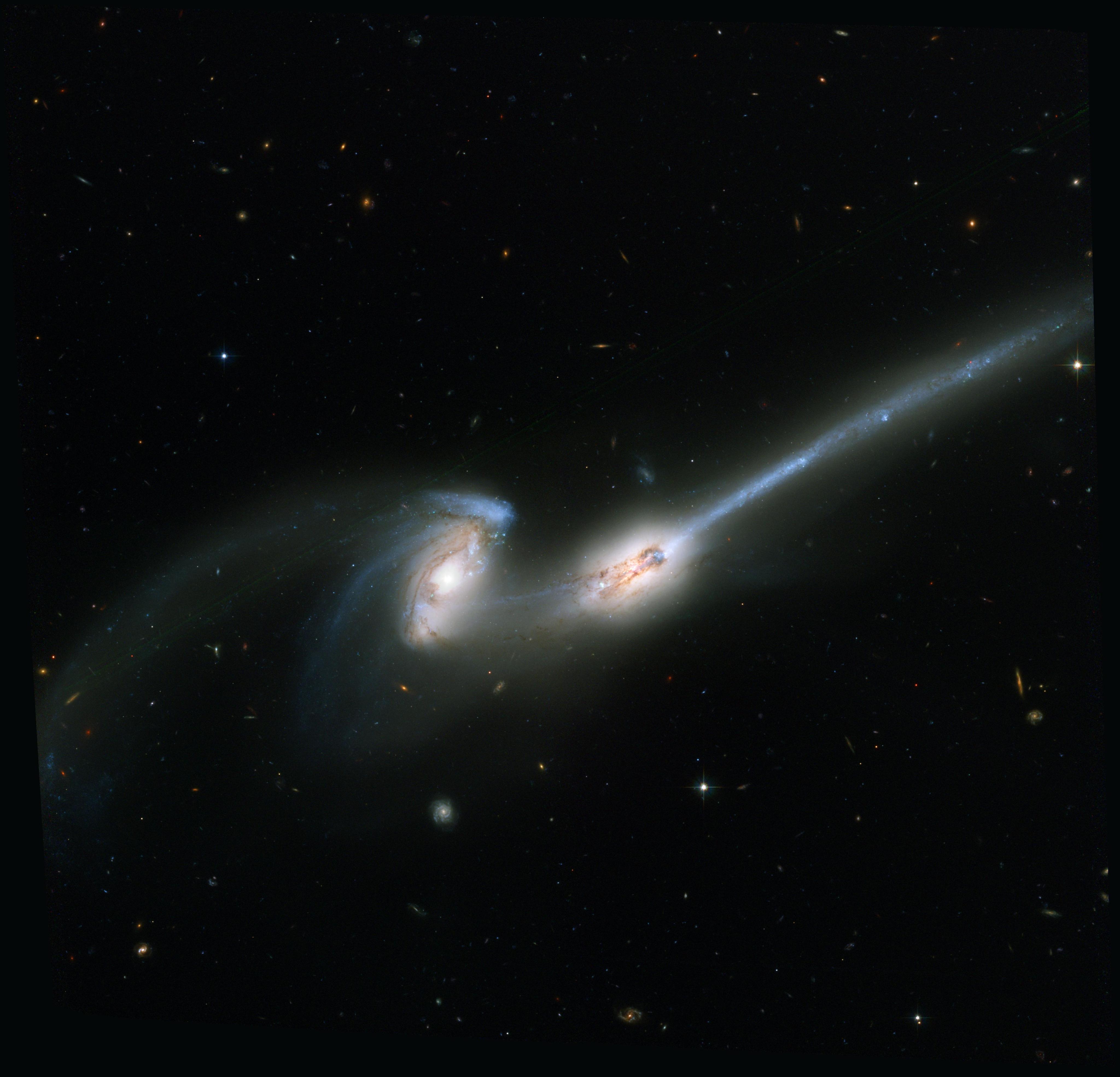
The Mice – NGC 4676
The Mice This colliding pair of spiral galaxies is known as "The Mice" because of the long tails of stars and gas emanating from each galaxy. Otherwise known as NGC 4676, they will eventually merge into a single giant galaxy. In the galaxy at left, the bright blue patch can be identified as a cascade of clusters and associations of young, hot blue stars, whose formation has been triggered by the tidal forces of the gravitational interaction. Streams of material can also be seen flowing between the two galaxies in this Hubble Space Telescope image. The clumps of young stars in the long, straight tidal tail (upper right) are separated by fainter regions of material. These dim regions suggest that the clumps of stars have formed from the gravitational collapse of the gas and dust that once occupied those areas. Some of the clumps have luminous masses comparable to dwarf galaxies that orbit in the halo of our own Milky Way. For more information, visit: hubblesite.org/contents/news-releases/2002/news-2002-11.html For a computer simulation of The Mice colliding, visit: https://hubblesite.org/contents/media/videos/2002/11/285-Video.html?news=true
